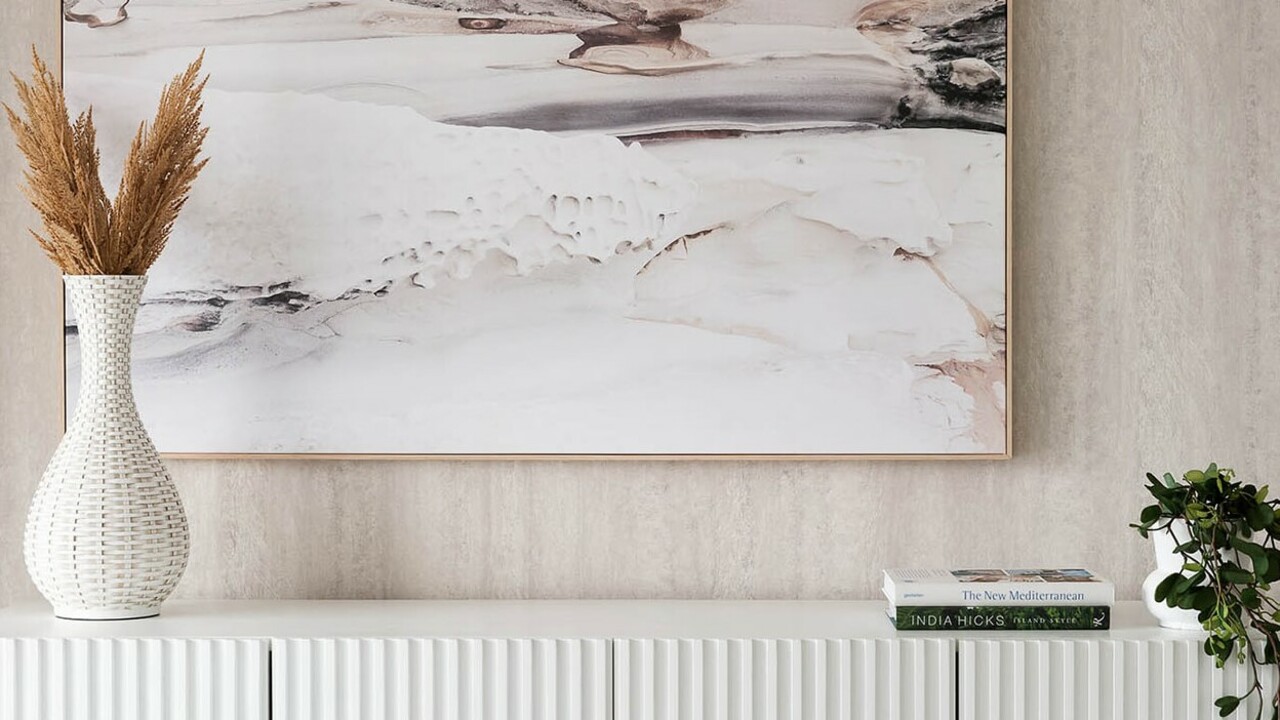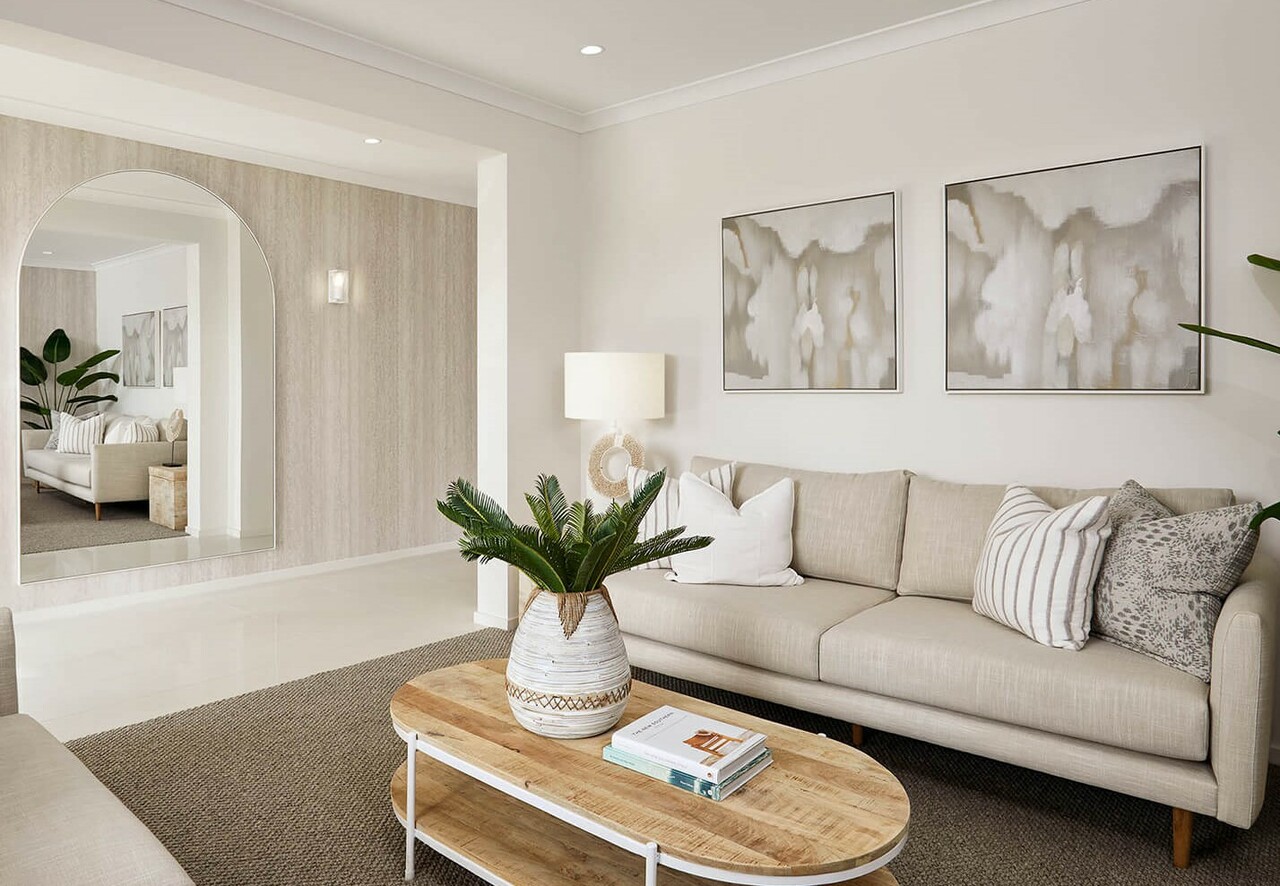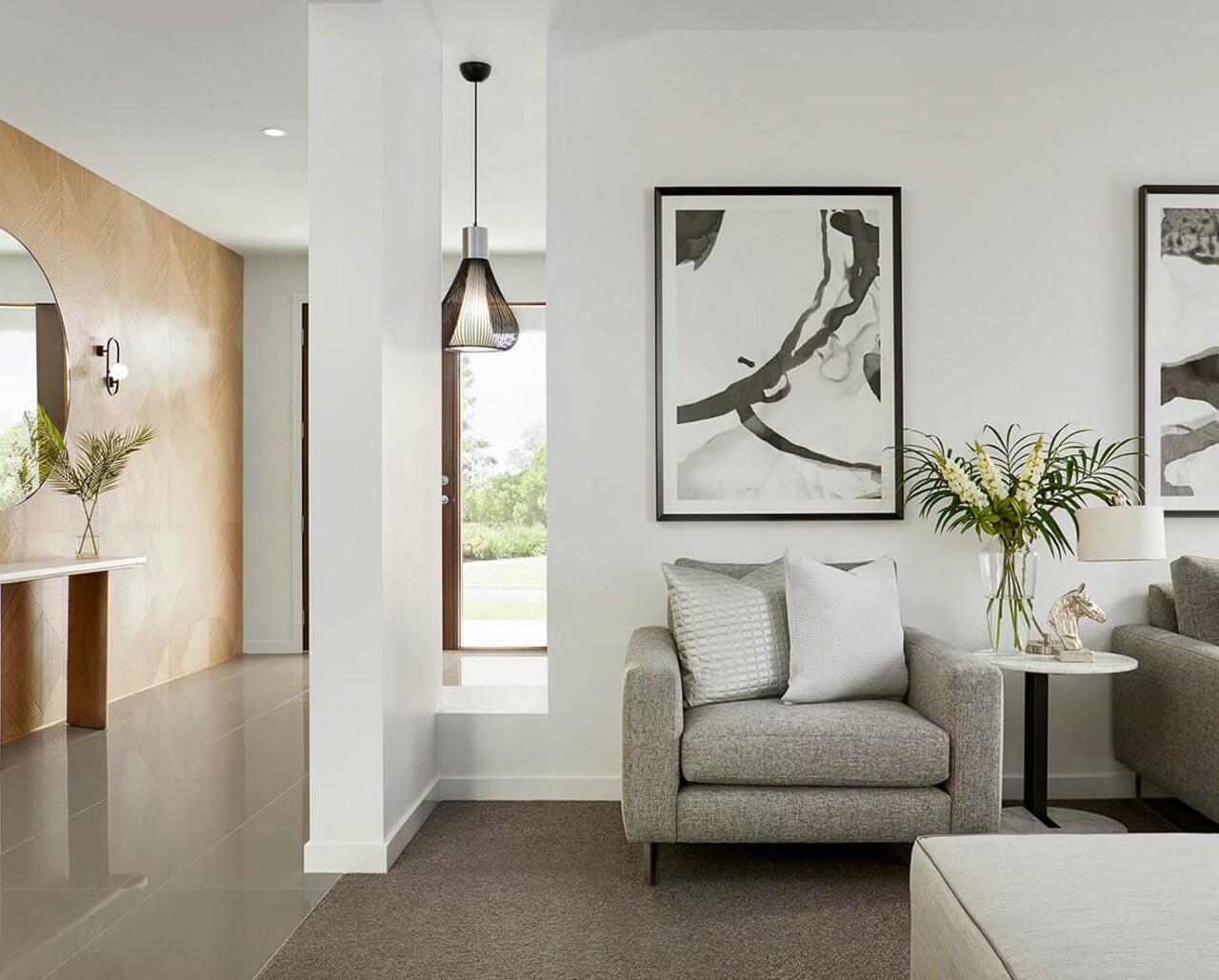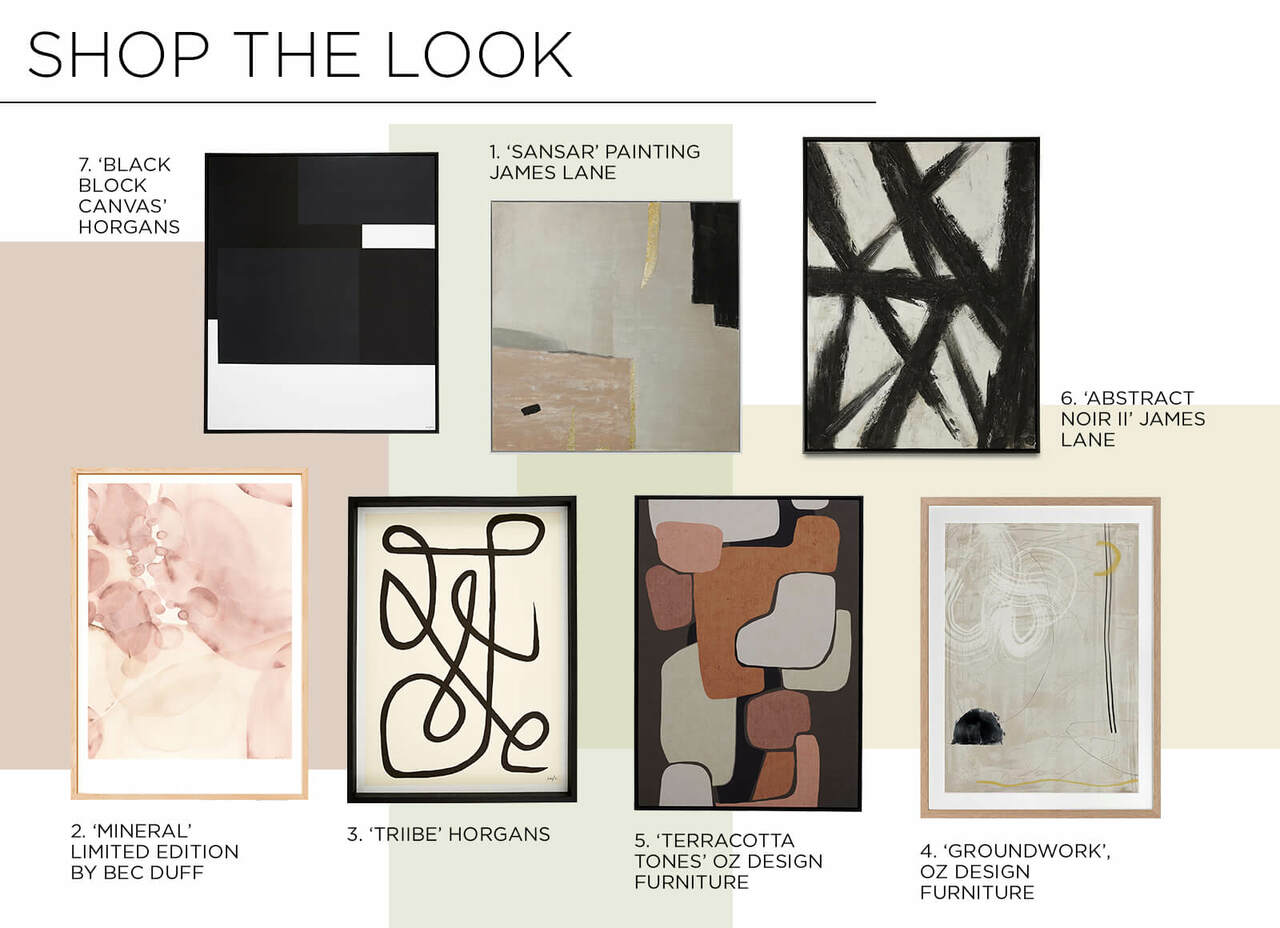7 Tips for Choosing the Perfect Artwork For Your Home
by Jess Hodges, Interior Design Manager

Artwork is the perfect finishing touch to a room – here’s how to choose artwork that looks fantastic and complements the interior design of your home.
If you’re looking to add a little colour and personality to your home, there’s no better way than with an art piece. Bring in complementary rugs, cushions and decor and you’re well on your way to creating a scheme with depth and character that your family and friends will love spending time in.
Read on for our practical tips on how to choose art for your home.
1. Consider the style and mood of the room when selecting the colour of an artwork piece
Unsure how to choose the perfect piece of artwork for your interior? When it comes to buying art, start by thinking about the mood you want to create in a room. This will help you ensure the art fits within that vision. For example, an abstract print in soothing tones will help create a sense of calm in a guest bedroom. An interesting landscape or series of black and white photos would suit a large wall, such as in living rooms, where connection and conversation are the focus. Meanwhile, one piece of art that is bright with a colourful palette will work well in a busy kitchen or family room. Find art that complements your spaces - this will help you choose the perfect piece.
Think too about the style of your home. If you have a coastal or Hamptons-style home, you may want to seek out pieces with a coastal theme in tones of blue, white and neutrals or beachy photography. If your style leans more towards the eclectic or mid-century, retro prints with bold tones and playful geometry will blend in seamlessly. If your home is more traditional, consider a traditional landscape or a series of botanical prints. The type of artwork you choose can completely change the feel of your home decor.

2. How to choose artwork by colour
You’ll want the colours in your artwork to speak to the tones of the surrounding room, so consider the colours of walls, floors, soft furnishings and decor items. For a seamless look, choose pieces that contain one or two of the accent colours in the room. Play with shades and tone to add depth to your decorative scheme.
Or, if you want your art to make a statement, go bold – but within reason. Choose a piece (or pieces) with colours that are different, yet complementary, to the other tones in the room. For example, if your room has a lot of soothing greens, consider an artwork that features rich terracotta and accents of black.
3. Decide if you want wall art to be the focal point
Any interior designer will tell you that every room needs a focal point – but not more than one. It can be a striking artwork, a fabulous rug, a sculptural fireplace. If your room already has a focal point, it’s wise to choose art that is less imposing so that it doesn’t compete for attention with the star of the show. Selecting art can be a tough process, so if you're stuck, lean on the color palette of the room as a guide.

4. Trust your instincts to help you buy art you love
There are no hard and fast rules for choosing artwork – the key is to buy something that speaks to you and that you will be happy living with for years to come. If you fall in love with a piece, but you’re not sure if it will work in your interior, ask the gallery or store if there is a cooling-off period so you can try the art on your walls in different rooms of your home. You can also try before you buy using the latest 3D augmented reality. This app allows you to get a feel for where you may want the art put on your walls and how it will sit inside your space before you commit.
5. How to choose beautiful artwork that is the right size and shape
A lot of people struggle with knowing how big a piece should be to suit the space. Fortunately, there are few rules when it comes to selecting the right size artwork:
- On a plain wall with no furniture, the artwork should take up around 50-70 per cent of the wall space.
- If your framed art is going above a piece of furniture, such as a sofa or console table, it should be roughly 60-75 per cent of the length of the furniture. It should never be wider than the piece of furniture below it.
- If you’re hanging a piece above a bedhead, it should be almost the same width as the bedhead.
- Hang art so the centre is at your eye height.
- If you have pieces of artwork in the same room on two walls or on the opposite wall to each other, ensure they are hung at exactly the same height. Also consider anything else in the room and whether it looks right alongside it.
You should also consider the shape of the wall. If you have a long, slender wall, then a portrait-style piece will work best. If the wall is wide, seek out a landscape-style piece or a trio of artworks arranged horizontally.

6. Size matters - Frame it right for your wall
Take a cue from art galleries and opt for simple, minimal frames. Choosing the right frame for the type of art can make or break the piece. Simple frames in black, white, timber and gold will never go out of style and won’t detract attention from the artwork. If you favour timber frames, remember to factor in the colour of your floors – a dark wooden frame won’t look right in a room with pale timber floorboards. Also consider any other frames in the room and ensure they match.
7. Decide on the perfect number of artwork pieces for your wall
One piece, two, three or four? When it comes to choosing art, knowing the right number of prints to hang can be a confusing business. Again, it largely comes down to size of the wall and what else is going on in the room. A sparse wall in a room with minimal furnishings can take a very large artwork or a gallery wall made up of smaller, individual pieces. If you’re hanging art above a sofa or bedhead, it doesn’t matter if you choose one large piece or two (or three) smaller ones, so long as the arrangement doesn’t run beyond the width of the furniture. Bear in mind that if you’re hanging multiple pieces together on a blank wall, you’ll want to leave at least a few centimetres between each one.

When hanging art on multiple walls, look to have one larger ‘hero’ piece and one or two smaller pieces on the other wall or walls to create a sense of visual balance. Art needs to have space to breathe within the space.
As a general rule, having one big piece of art can make a room feel bigger whereas having lots of smaller pieces arranged around the room (as opposed to a gallery wall, which effectively acts as a single artwork) can make it feel cluttered.
And remember, hanging art is often a case of trial and error. Be prepared to move pieces around – even to different rooms – until the arrangement looks as you'd like it to.
Exploring inspirational interior home photography of art can help clarify your vision
Part of designing a home is considering what artwork you would like throughout your home and where it will go. Our inspirational image gallery of our display homes across Melbourne and Geelong, showcases stunning examples of art in every room - be it a dining room, living room wall or family room. This gallery shows where our interior designers chose to put their art choices to enhance each space. Explore these meticulously designed areas and draw inspiration for your own home - discovering how good art can truly elevate a room and add the finishing touch to your home.

Access endless home design inspiration via the Home Files blog here. Or get even more creative ideas when you explore one of the many Carlisle display homes across Melbourne.

Jess Hodges
Interior Design Manager
Jess' eye for design and versatile skill set have led to multiple industry award wins for Carlisle Homes, showcasing her ability to deliver high quality and tailored interior solutions.
Learn more about Jess Hodges